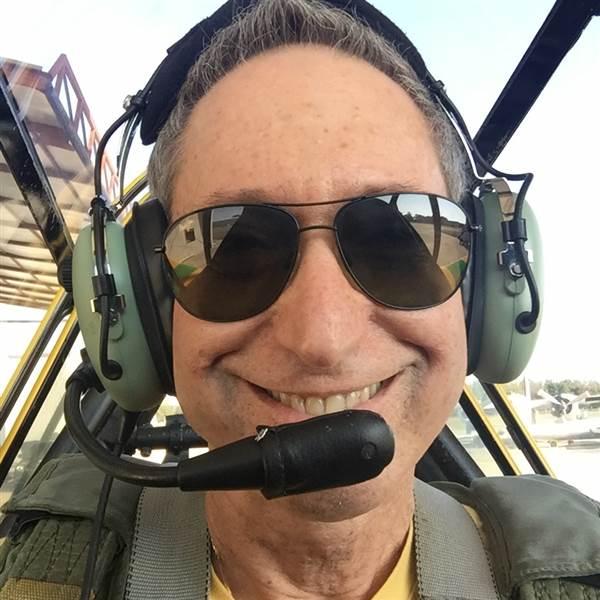The applicant must demonstrate a controlled blood glucose level and an absence of any diabetic complications. The physician is looking for all of the “opathies.” The “opathies” are neuropathy (nerve damage), retinopathy (retina damage), and nephropathy (kidney damage). A hemoglobin A1C must be taken 30 days before the examination. The HgA1C will show how much glucose is coating the hemoglobin in the blood. The goal HgA1C is less than 5.7%. The FAA will allow up to 8.9%.
The main treatment for Diabetes Type I diabetes is insulin. Type II is treated with oral anti-hyperglycemic medications and certain non-insulin injections. The FAA developed a chart of acceptable combinations of oral/injectable medications to assist pilots and physicians in selecting appropriate therapy when more than one medication is needed. No more than one medication from each group and up to 3 oral medications total from the 7 classes are acceptable for use.
These groupings are intended to minimize the adverse side effects and complications from taking medications that are “incompatible with aviation safety” as the FAA would state it.
Group A is called Biguanides. The primary medication in this group is Metformin (Glucophage®). Metformin decreases the glucose production in the liver and decreases the absorption of glucose in the intestine. This mechanism improves the sensitivity of insulin by increasing the glucose uptake by the muscles for energy production. Some common side effects reported with taking metformin are GI intolerance, flatulence, weight loss, and muscle weakness. Metformin is prescribed to diabetics who are overweight as it may cause weight loss. An added benefit of Metformin is it will also decrease LDL cholesterol. Metformin has a unique aroma that I noticed back in my community pharmacy days. The tablet smells like dead fish or old locker room socks. This has caused some patients to stop taking it. The benefits from taking Metformin far outweigh the smell.
Group B is called the Thiazolidinediones (TZD). This group contains pioglitazone(Actos®) and rosiglitazone (Avandia®). Pioglitazone and rosiglitazone increase the insulin sensitivity of muscle and liver cells. This allows more glucose to get into the cell for energy utilization and decreased glucose levels in the blood. Side effects include edema (accumulation of water in the lungs and legs) when given in combination with a sulfonylurea, hypoglycemia, and heart failure.
Group C includes GLP-1 mimetics and DPP4 inhibitors. GLP-1 mimetics include dulaglutide (Trulicity®), exenatide (Byetta®), exenatide-ED (Bydureon®), liraglutide (Victoza®), and albiglutide (Tanzeum®), which are injectable non-insulin medications for DMT2 patients. Some of these injections are short acting and are injected once or twice a day and some are used weekly. They are glucagon-like agonists. These medications will increase insulin release from the pancreas and slow gastric emptying into the blood. GLP-1 medications have been shown to promote weight loss vs. DPP-4 medications. Some common side effects seen in this group are diarrhea, constipation, and loss of appetite.
DPP-4 inhibitors include sitagliptin (Januvia®), saxagliptin (Onglyza®), lingliptin (Tradjenta®), and alogliptin (Nesina®), which increase glucagon-like peptides and gastric inhibitory polypeptides. This mechanism causes an increase secretion of insulin, inhibits glucagon secretion, and decreases blood glucose levels. Nausea, stomach pain, and skin reactions are listed as side effects in DPP-4 inhibitors.
Group D are the alpha-glucosidase inhibitors. Medications in this category are acarbose (Precose®) and miglitol (Glyset®). The mechanism of action is to inhibit the enzymes that break down carbohydrates. They stop the complex carbohydrates from being broken down into glucose. Some serious side effects include bloody diarrhea, severe constipation, and severe stomach pain.
Group E includes the sulfonylureas and meglitinides. The most commonly prescribed sulfonylureas are glyburide (Diabeta®), glimepiride (Amaryl®), and glipizide (Glucotrol®). In seniors, glyburide and glimepiride has been shown to cause an increased risk of hypoglycemia (low blood sugar). The mechanisms of action of sulfonylureas are to stimulate insulin release in the pancreas. They are what I call “squeezers.”
Insulin has been shown to cause weight gain. Patients who are not obese are the best diabetic patient population to be prescribed sulfonylureas. Side effects include hypoglycemia, stomach pain, and low-grade fever.
Meglitinides include repaglinide (Prandin®) and nateglinide (Starlix®). This category of anti-hyperglycemics cannot be prescribed with Group C medications due to the risk of hypoglycemia. The mechanism of action is very similar to the sulfonylureas as they also stimulate the pancreatic beta cells to increase secretion of insulin. Side effects include upper respiratory infection and back pain, and repaglinide has been reported to cause weight gain.
Diet, exercise, and medications have been proven to save lives in the diabetic patient, which of course includes the diabetic pilot. Compliance with guideline and evidence-based medications is not just important, but is a necessity. Non-compliance with diabetic medications is a path leading to bad outcomes and most importantly an inability to retain a medical certificate. Be a “Goldilocks” diabetic. Keep your blood in the “just right” range and enjoy your flying.






